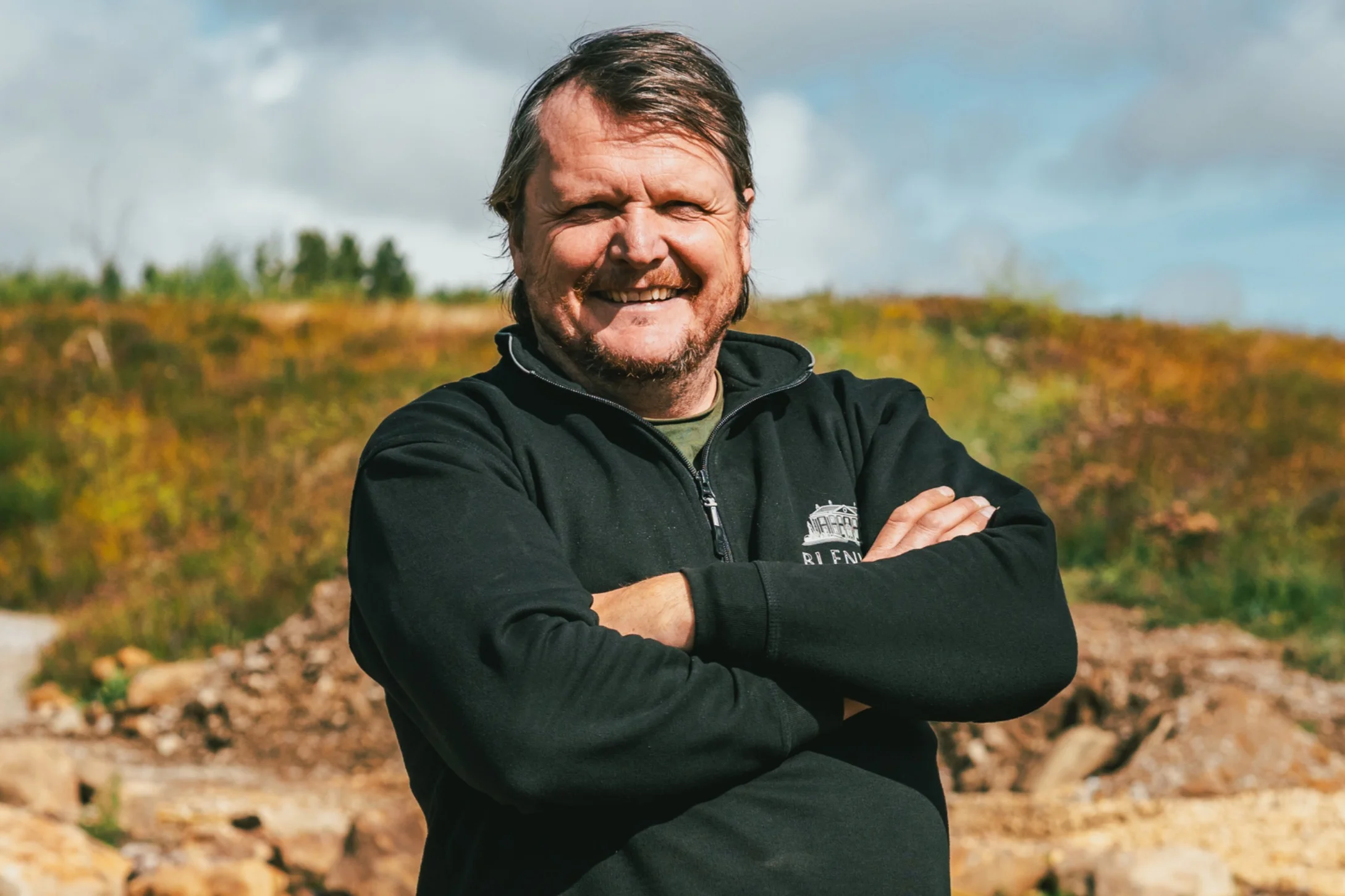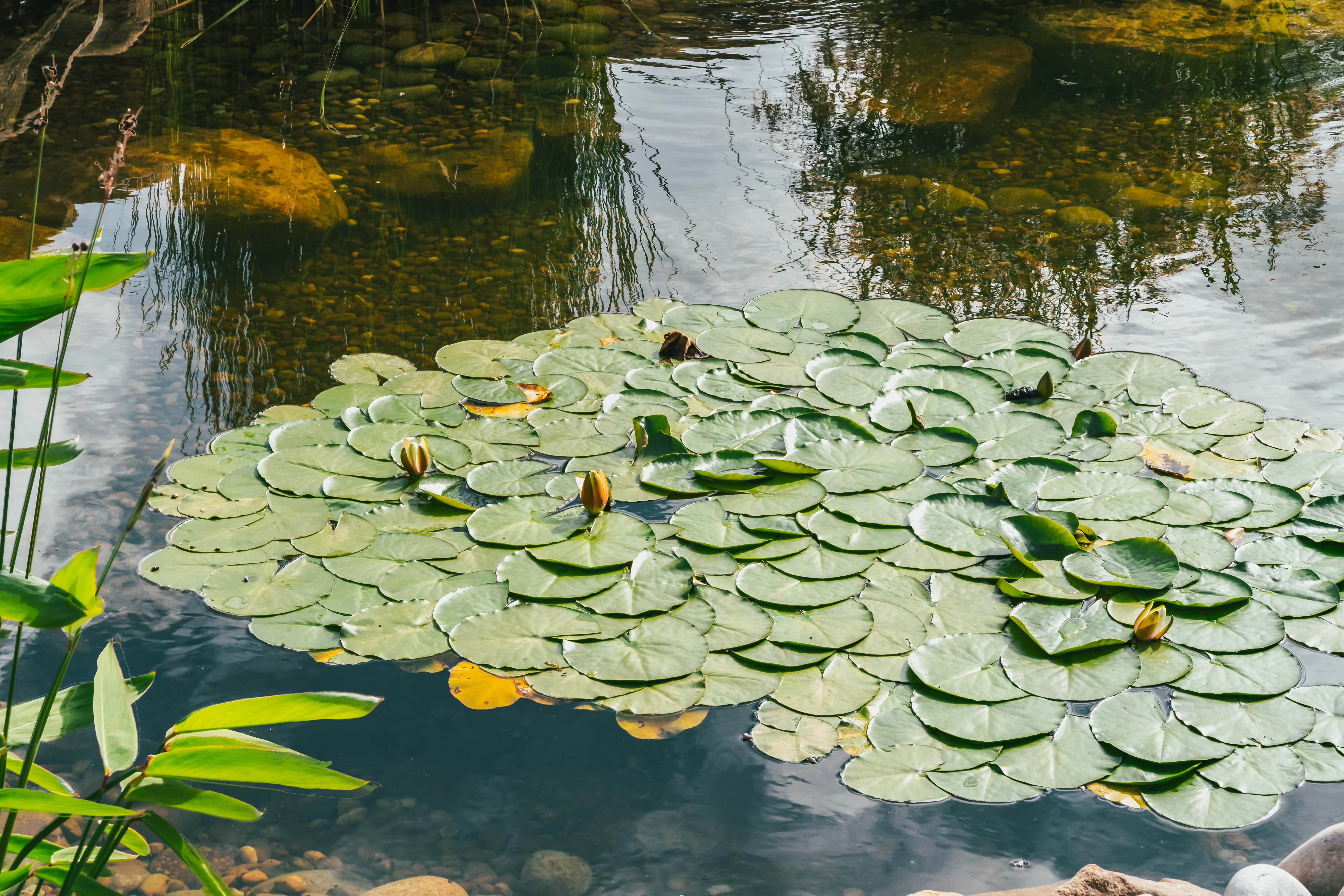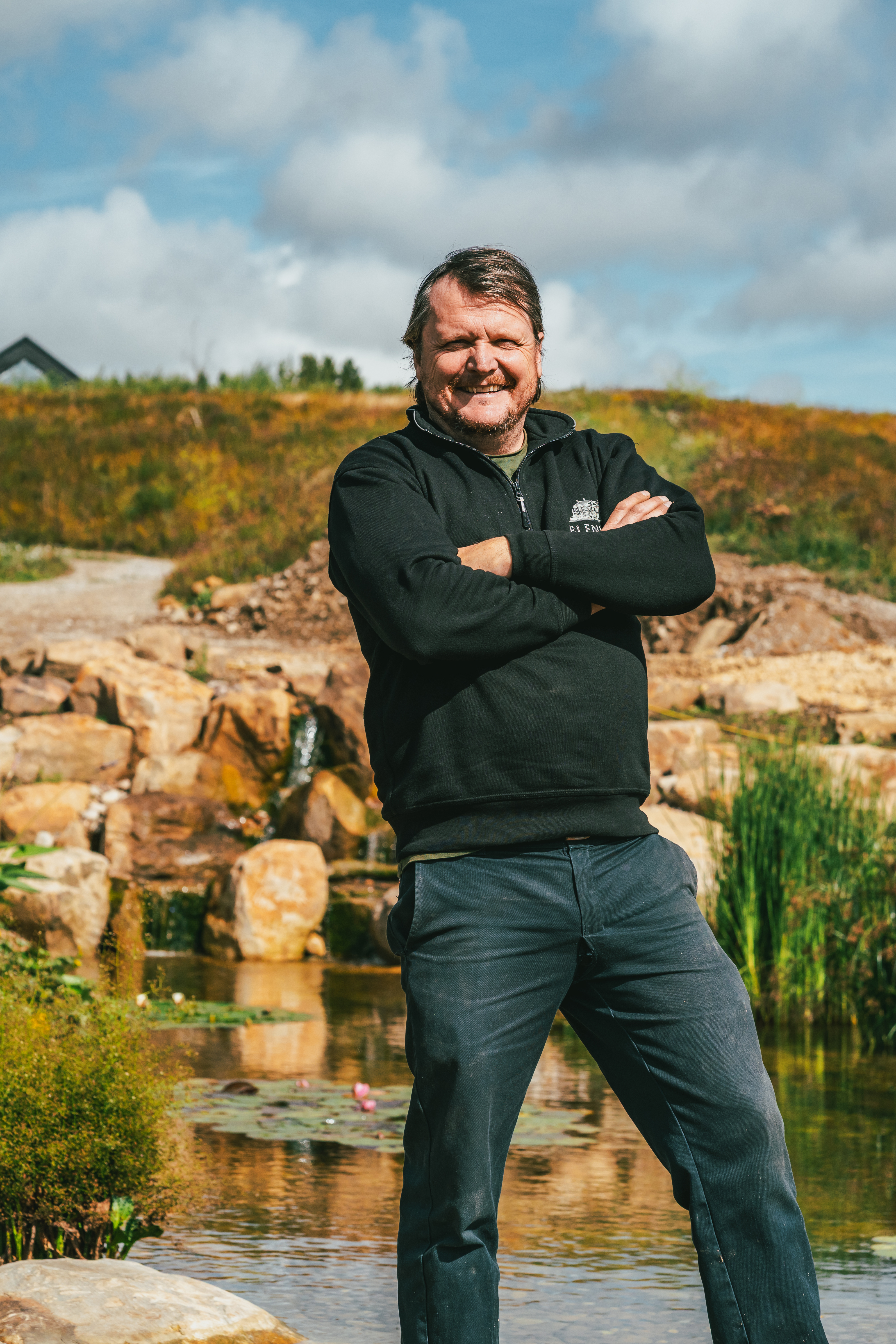Luke is Blenheim’s head gardener, in charge of creating and maintaining our beautiful landscapes. We talk all things gardening, from own projects to his experience at Blenheim and got his gardener’s recommendations to improve outside spaces.

I've always been around gardening. My dad was a really keen gardener, he was a joiner by trade - retired. But he loved his gardens and we've always had nice gardens. Career-wise, no, I wanted to be a rock and roll star, but that didn't work out [laughter].
I was looking for some work and a landscape gardener that my dad knew needed a hand - I was about 25 at the time, I started with him. And I thought, yeah, I can do this.
I have, yeah […] don’t come and look at my garden - currently I'm in the process of doing it up. I’m building a sunken courtyard and steel pergola, just finished paving and built a big retaining wall.
Well, it's not really - easy if you plan it right. You just plan everything and you do it stage by stage. But it's difficult in your own garden because no one's making the decisions for you. You haven’t got a customer saying they would like this, this and this. So I thought, what should I do here? And that's why I settled on that sunken courtyard, the retaining wall, the workshop, I'm going to do a pergola fire-pit. We’ll have to come over. Yeah, not yet though(…) What's your timescale? I'm getting it done this winter. It’ll be ready for spring.
Oh it’s next level. I've worked on some big projects in the past. I used to look after a garden just on the outskirts of Bradford, Royds Hall Estate, and that was 25 acres. Well, they had everything. And, Sir, who owned it, his standard was up here. Then when I started with Blenheim, I suppose it was a bit intimidating, but also not, because I had already worked to that sort of standard. If you see a weed, even if it’s not big, you just pull it out. So it’s maintaining that level all the time, which I think is great because every time you walk away from it, you can look and think, right, we've made it look like that.
It's going to be something else. I had the job interview for the job, they took me there, and walking around, I thought I want to be a part of this […] You know, you don't get to be a part of something like that very often. What that client wants, it could win awards. It’s got everything, it's got the views, it's got woodland, it's got meadows, it's got a manicured lawn, it’ll just have everything - a really beautiful garden.

Bulbs yeah, with the bulbs - definitely, because the best time is now, so they come up in spring or whenever they come on for next year, they can start to shoot and they've got to establish themselves. With everything else, really it's the time to move plants, if you had something that's already established in your garden, and you want to move it, the time to move it is now, the autumn / winter while they’re dormant. As far as planning ahead, I’m of the mind that if you like that plant, buy it, and if it doesn't do well, then move it to another spot it might flourish. That's the thing about gardening it’s an ongoing thing. You shouldn't shy away from moving? No, no. Definitely not, if you’re wanting to move a plant, move it. You know, just make sure you, you dig it up properly, take care of the roots. But yeah, there's no real rigidity to it, because that plant might not work, it might not like that spot. You might only move it four meters and it will be flourishing.
At the minute there seems to be lots and lots of nice, clean, straight lines, lots of angles. It's gone away from cottage garden and even formal garden to a really straight, really contemporary sort of look, which works in a sense, as far as I'm concerned, it works when it’s done well. Plant-wise, I don't see many roses doing well, no big flowery plants - low maintenance, that's what people seem to be wanting nowadays. It's a lot of foliages like ferns and castor oil plants that give height and structure to a garden. With a rose, you might need to prune twice a year, and then you've got to keep taking the heads off to keep it blooming, things like that. People don't seem to want to do that anymore, they want to use their space as well. People are getting out into their gardens more though, definitely.
It just depends really what look you're going for, you can plant tall grasses, high-growing shrubs, tall shrubs to create a screen, or you can use a nice fence, it depends what sort of feel you’re going for in the garden. But planting wise, you can get nice tall grasses and a big herbaceous border. People don’t use herbaceous borders enough as far as I'm concerned - to create separate spaces. You can bring your border out two or three metres in your garden and create something where you walk around it to get into your space at the bottom of your garden - you can still see through, its not a solid, that’s what I’d recommend.
If it was on a boundary line, you could put a hedge up. I’ve done this in the past with a customer and planted a row of willows - or you can do it with Hawthorn. When they get to a certain height, you saw halfway through the actual branch, and then you bend it, it breaks, but it doesn’t kill it - don't take it off completely, and then you weave it into another. What happens then is that they’ll grow horizontally, and then the next year it sends up shoots vertically, and then you do the same and you can take it up higher. That's a nice way - it’s a lot of work, but if you do it right, it looks great. I did it on an allotment and it looked brilliant. You can twist it if you want, which looks cool - it's a little bit of a lost art.
